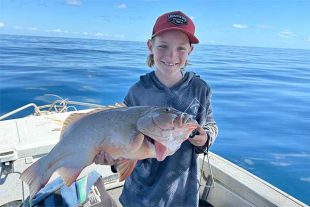Australia’s list of critically endangered fish has doubled in what conservationists say is a sign of the urgent need to tackle the problem of invasive freshwater species.
Nine new species, all types of galaxias, were given critically endangered status in March, a recognition that they are on the brink of extinction.
One species of galaxias was also added to the endangered category.
They include the short-tail galaxias, the tapered galaxias and the East Gippsland and West Gippsland galaxias, with the additions taking the total number of fish listed as critically endangered under national laws to 18.
Invasive Species Council conservation director James Trezise said, “These freshwater fish are some of Australia’s most vulnerable animals, with almost all of them being assessed as having a greater than 50 percent chance of going extinct in the wild in the next 20 years.”
“If we are serious about stopping extinctions, then we need to tackle the major threats that are driving declines of our native animals,” Mr Trezise said.
“Scientists have recommended a threat abatement plan be established for freshwater pest fish, yet this hasn’t happened.”
The decision to list the species follows a raft of assessments that occurred in the aftermath of the 2019-20 bushfire disaster.

The newly listed fish were once thought to be a single species, known as the mountain galaxias, but researchers have described the animals as distinct species.
The biggest threat to galaxiid species is invasive trout, which have caused the range of many of the fish to contract to extremely small areas, often in headwaters above waterfalls where trout are excluded.
Many have only one population left, putting them at extreme risk of extinction.
Victoria’s Arthur Rylah Institute senior research scientist Dr Tarmo Raadik said, “Because there’s only a single population, any normal disturbance that may occur in a forest such as a fire or sedimentation from a flood can knock out the whole population.”
“The other issue of being forced to these small single areas is genetic decline, they become inbred because you’ve got no genetic recruitment coming in from elsewhere,” Dr Raadik said.
University of Canberra associate professor Mark Lintermans said some of the streams galaxias were now found in were tiny pools measuring a metre in width and 10cm deep.
“So you have a drought and the stream dries up,” he said.
Both scientists said it would take a combination of translocations and captive breeding to establish new populations and reduce the extinction risk.
Assoc Prof Lintermans said fish fell into a category he called “underwater and overlooked” and there were dozens more considered threatened on the International Union for the Conservation of Nature’s red list that had not been assessed under Australian laws for listing.
Many of the newly listed galaxiidae species had been acknowledged as threatened by other scientific lists, including the red list, for years.
The Albanese Government has set a target of no new extinctions and has committed to introducing reforms to Australia’s national environmental laws.
Other animals recently added to Australia’s list of threatened species included the eastern population of the once common Major Mitchell’s cockatoo, or pink cockatoo.
Mr Trezise said the reforms were a “huge opportunity to fix Australia’s threat abatement and conservation planning system” and national coordination was necessary to tackle major threats.
Minister for the Environment and Water Tanya Plibersek said, “For nearly 10 years the Coalition Government had their heads in the sand about the extinction crisis on our doorstep.”
“Our target of zero new extinctions includes our native freshwater fish.
“Listing these 10 galaxiidae species under national environmental law is a critical step to increase efforts to protect and restore these precious populations.”
The Guardian
 Bush ‘n Beach Fishing Magazine Location reports & tips for fishing, boating, camping, kayaking, 4WDing in Queensland and Northern NSW
Bush ‘n Beach Fishing Magazine Location reports & tips for fishing, boating, camping, kayaking, 4WDing in Queensland and Northern NSW









